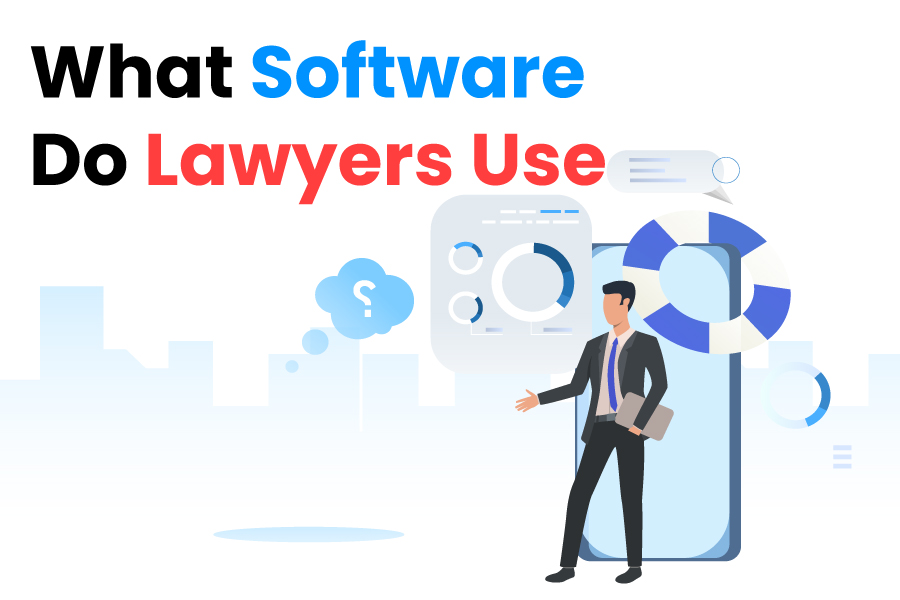In the contemporary legal sphere, the integration of technology has fundamentally reshaped the way lawyers approach their work. From solo practitioners to large law firms, legal professionals rely on a plethora of software tools to streamline various aspects of their practice, from case management and document automation to legal research and client communication.
This article delves into the expansive realm of software tailored specifically for lawyers, offering a comprehensive exploration of different categories of legal software, their functionalities, and the benefits they bring to legal practice. By providing a nuanced understanding of the software landscape, this guide aims to empower lawyers to make informed decisions about selecting and leveraging the right tools to enhance their efficiency, productivity, and overall effectiveness in serving their clients and navigating the complexities of modern legal practice.
Case Management Software
Case management software stands as a cornerstone in the contemporary legal landscape, offering a comprehensive and integrated platform to streamline the myriad tasks associated with legal cases. This software encompasses a wide array of features and functionalities designed to cater to the diverse needs of legal professionals and law firms.
At its core, case management software serves as a centralized hub for managing client and case information, facilitating efficient intake processes, organizing documents and evidence, tracking tasks and deadlines, integrating with billing systems for seamless invoicing, and enhancing communication and collaboration among team members.
The benefits of case management software for lawyers and law firms are manifold. By leveraging its robust features, legal practitioners can significantly enhance their efficiency and productivity, ensuring that critical case-related tasks are completed in a timely and organized manner. The ability to access case information quickly and easily from a centralized platform also promotes better organization and accessibility, reducing the likelihood of errors or oversights.
Moreover, case management software plays a pivotal role in enhancing client communication and satisfaction. Through secure client portals and communication tools, lawyers can keep their clients informed about case progress, share documents and updates, and respond promptly to inquiries, thereby fostering stronger client relationships and instilling trust and confidence.
From a strategic standpoint, case management software enables law firms to streamline their workflows, optimize resource allocation, and improve overall operational efficiency. By automating repetitive tasks, simplifying administrative processes, and providing valuable insights through reporting and analytics features, this software empowers firms to focus more on delivering high-quality legal services and less on time-consuming administrative tasks.
However, choosing the right case management software requires careful consideration of various factors, including the specific needs and preferences of the firm, the scalability and customization options offered by the software provider, the pricing structure, and the ease of integration with existing systems and workflows. Additionally, implementing and onboarding staff to the new software requires thorough planning and training to ensure a smooth transition and maximize user adoption.
Despite the numerous benefits of case management software, law firms may encounter certain challenges during the implementation and adoption process. These challenges may include resistance to change from staff members, concerns about data security and confidentiality, and technical issues or limitations with the software itself. However, with proper planning, training, and support from the software provider, these challenges can be addressed effectively, allowing law firms to reap the full benefits of their investment in case management software.
Looking ahead, the future of case management software holds exciting possibilities, with advancements in technology such as artificial intelligence (AI) and predictive analytics poised to further enhance its capabilities. These innovations promise to revolutionize how legal professionals manage cases, enabling them to make more informed decisions, predict case outcomes with greater accuracy, and ultimately deliver better outcomes for their clients. As the legal industry continues to evolve, case management software will undoubtedly remain a critical tool for lawyers and law firms seeking to thrive in an increasingly competitive and complex environment.
Understanding Document Management Software
Document management software (DMS) is an indispensable tool in the legal profession, providing a centralized platform for efficiently organizing, storing, and managing documents and files associated with cases and clients. Here’s a detailed exploration of this essential tool:
- Introduction To Document Management Software (DMS): Document management software (DMS) serves as a sophisticated solution designed to address the complexities of managing documents in a legal setting. Its purpose extends beyond mere storage; it serves as a comprehensive system for organizing, tracking, accessing, and securing documents throughout their lifecycle. In the context of legal practice, where documentation plays a pivotal role in case preparation, client communication, and regulatory compliance, DMS emerges as an indispensable asset.
- Key Features And Functionalities: Document management software offers a plethora of features and functionalities tailored to meet the unique needs of legal professionals and law firms. These include document storage and organization, version control and document tracking, document indexing and search capabilities, document security and access controls, and integration with other software systems used in legal practice.
- Benefits For Lawyers And Law Firms: The benefits of document management software for lawyers and law firms are manifold. It facilitates improved organization and accessibility of documents, streamlined document retrieval and sharing, enhanced collaboration among team members, increased efficiency and productivity, and better compliance with regulatory requirements and client confidentiality obligations.
- Types Of Document Management Software: Law firms can choose from various types of document management software, including on-premises vs. cloud-based solutions, standalone DMS vs. integrated DMS within larger software suites, and open-source vs. proprietary software options. Each type offers its own set of advantages and considerations, depending on the specific needs and preferences of the firm.
- Implementation And Integration: Successful implementation of document management software requires careful planning, data migration, training, and integration with existing workflows and software systems used by the law firm. Customization and configuration options are also available to tailor the software to meet the firm’s specific needs and preferences.
- Best Practices For Maximizing Effectiveness: To maximize the effectiveness of document management software, law firms should establish document management protocols and naming conventions, regularly update and maintain document repositories, utilize metadata and tagging for efficient search and retrieval, implement document retention and disposal policies, and ensure compliance with data privacy regulations and security best practices.
- Challenges And Solutions: Law firms may encounter challenges such as user resistance, technical issues, or difficulty integrating the DMS with existing workflows and software systems. These challenges can be addressed through comprehensive training and support, addressing user concerns, and implementing technical solutions to overcome software limitations.
Communication And Collaboration Tools
Communication and collaboration are essential components of successful legal practice, and the advent of technology has revolutionized the way lawyers interact with clients, colleagues, and other stakeholders. Here’s an in-depth exploration of communication and collaboration tools in the legal profession:
Introduction To Communication And Collaboration Tools: Communication and collaboration tools encompass a range of software applications and platforms designed to facilitate real-time communication, document sharing, and teamwork. In the legal profession, these tools play a critical role in enhancing productivity, efficiency, and client service by enabling seamless communication and collaboration among legal professionals and support staff.
Key Features And Functionalities: Real-time messaging, video conferencing, document sharing and collaboration, task management, and integration with other software are key features of communication and collaboration tools.
Benefits For Legal Professionals And Law Firms: Improved communication, enhanced collaboration, increased efficiency, flexibility and mobility, and improved client service are among the benefits of utilizing these tools.
Types Of Communication And Collaboration Tools: Messaging and chat apps, video conferencing platforms, document collaboration tools, and task management software are common types of communication and collaboration tools used in the legal profession.
Implementation And Integration: Successful implementation of communication and collaboration tools requires planning, training, and support to ensure that legal professionals and support staff are comfortable using the tools and understand their benefits. Integration with existing workflows and software systems is crucial to maximize the effectiveness of these tools.
Best Practices For Maximizing Effectiveness: Provide comprehensive training and support, establish communication protocols, encourage adoption and collaboration, and monitor usage and feedback to maximize the effectiveness of communication and collaboration tools.
Challenges And Solutions: Potential challenges in implementing communication and collaboration tools include user resistance, technical issues, and concerns about data security and confidentiality. These challenges can be addressed through comprehensive training and support, implementing security measures, and providing technical assistance to resolve any issues that arise.
Cybersecurity And Data Protection Software
In today’s digital age, cybersecurity and data protection are paramount concerns for law firms, given the sensitive nature of the information they handle. The use of cybersecurity and data protection software has become essential to safeguard client data, protect against cyber threats, and ensure compliance with privacy regulations. Here’s a detailed exploration of cybersecurity and data protection software in the legal profession:
Introduction To Cybersecurity And Data Protection Software:
Cybersecurity and data protection software encompasses a range of tools and solutions designed to protect law firms’ digital assets, including client data, intellectual property, and confidential information. These software solutions employ various techniques and technologies to prevent unauthorized access, detect and respond to security incidents, and ensure compliance with regulatory requirements.
Key Features And Functionalities:
Endpoint protection secures devices from malware and ransomware, while firewall and network security tools monitor and control network traffic. Encryption techniques secure data both at rest and in transit, and identity and access management solutions enforce strict authentication controls. Security information and event management (SIEM) software collects and analyzes security event data, while data loss prevention (DLP) tools monitor and control data transfers.
Benefits For Law Firms:
Cybersecurity and data protection software safeguard client data, ensure compliance with regulations, prevent cyber threats, and enhance reputation and client confidence.
Types Of Cybersecurity And Data Protection Software:
- Antivirus and antimalware software
- Firewall and network security solutions
- Encryption software
- Identity and access management (IAM) solutions
- Security information and event management (SIEM) platforms
- Data loss prevention (DLP) solutions
- Vulnerability management tools
Implementation And Integration:
Successful implementation requires careful planning, risk assessment, and alignment with business objectives. Integration with existing IT infrastructure is essential for seamless operation.
Best Practices For Maximizing Effectiveness:
Regular risk assessments, security awareness training, implementation of multi-factor authentication, keeping software up to date, and establishing incident response procedures are essential best practices.
Challenges And Solutions:
Challenges include limited resources and budget constraints, and the complexity of security threats. Solutions include leveraging cost-effective security solutions, staying informed about emerging threats, and implementing layered security controls.
Final Words
Cybersecurity and data protection software are indispensable assets for law firms in safeguarding their digital assets and ensuring the security and confidentiality of client information. By implementing robust cybersecurity measures, law firms can mitigate the risks posed by cyber threats, protect against data breaches, and comply with regulatory requirements.
Moreover, these software solutions enhance efficiency, productivity, and client confidence, ultimately contributing to the success and reputation of the firm. As the legal landscape continues to evolve, investing in cybersecurity and data protection, software remains a crucial priority for law firms to maintain a competitive edge and uphold their commitment to client confidentiality and trust.
Robert Stewart is a seasoned law blog writer with a passion for translating complex legal concepts into accessible, informative content. With a keen eye for detail and a knack for storytelling, Robert crafts engaging articles that educate and empower readers in the realm of law.
Drawing upon his extensive experience in the legal field, Robert brings a wealth of knowledge to his writing, covering a diverse range of topics including personal injury, family law, criminal defense, and more. His articles combine thorough research with clear, concise language, making them valuable resources for both legal professionals and laypeople alike.


